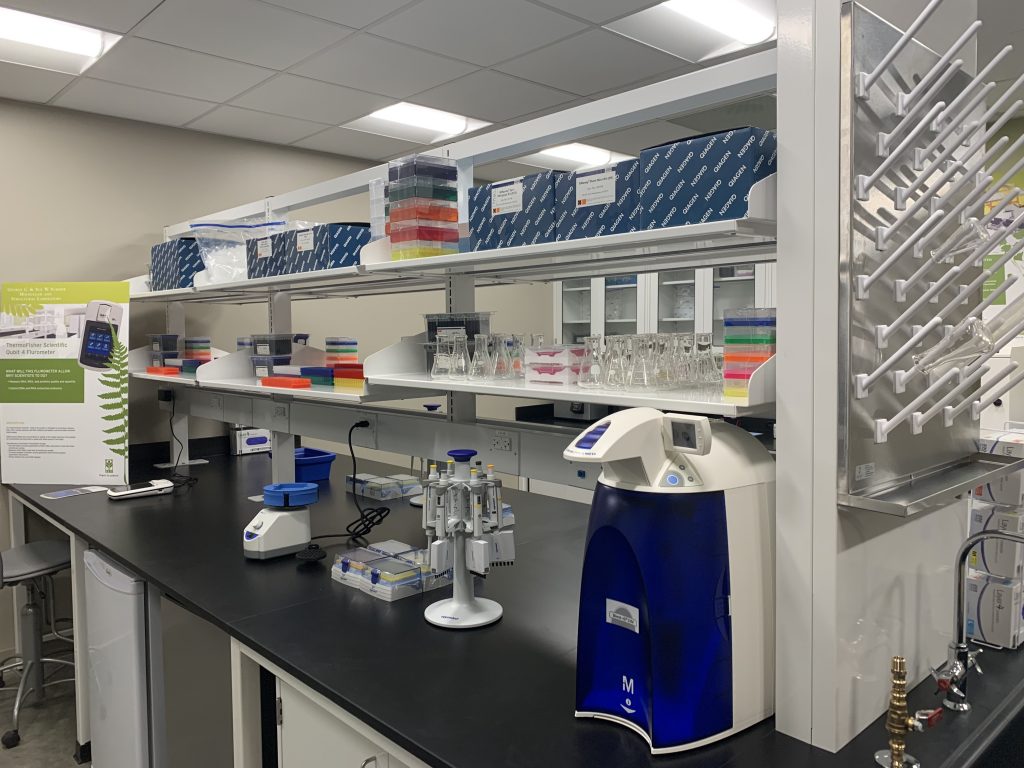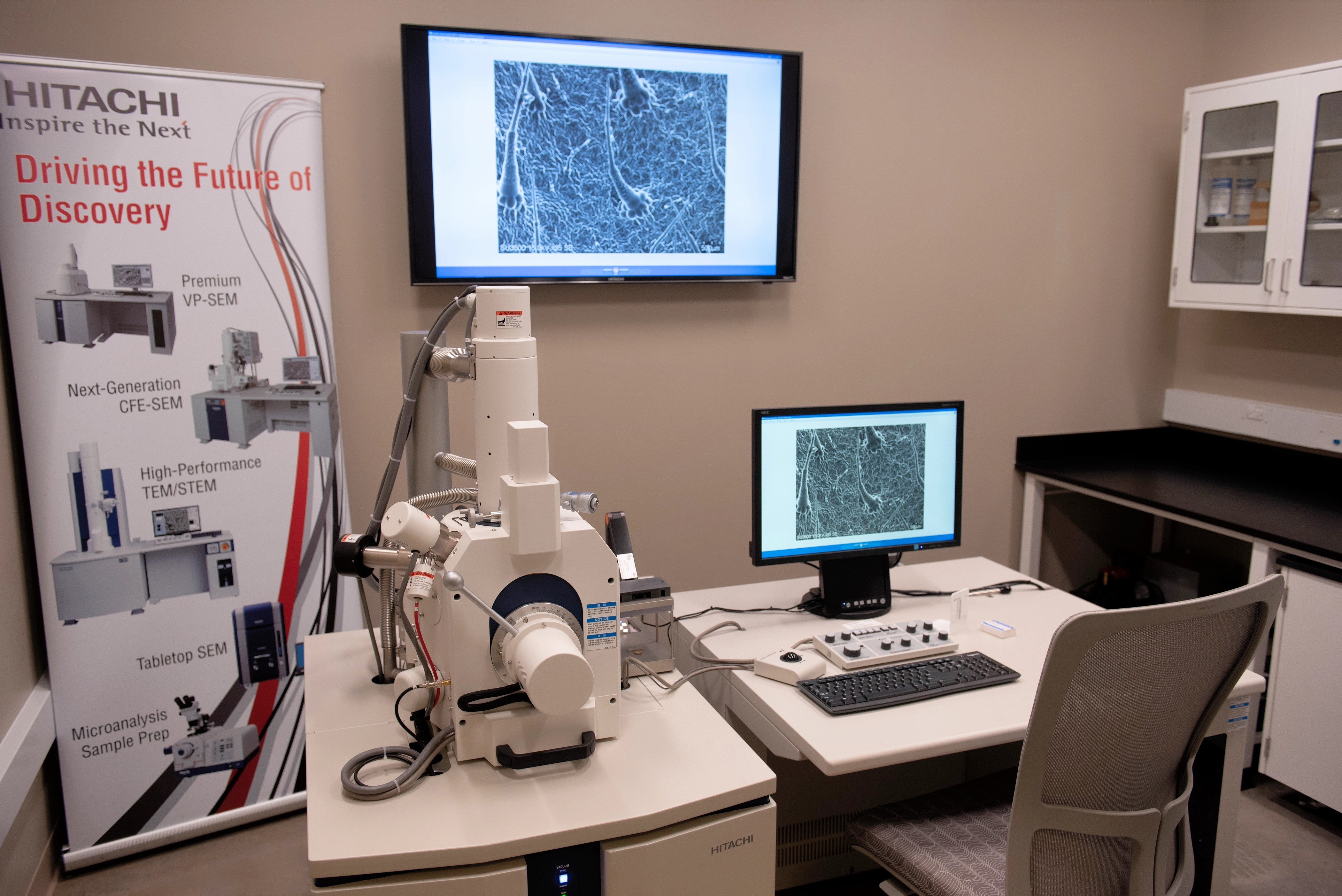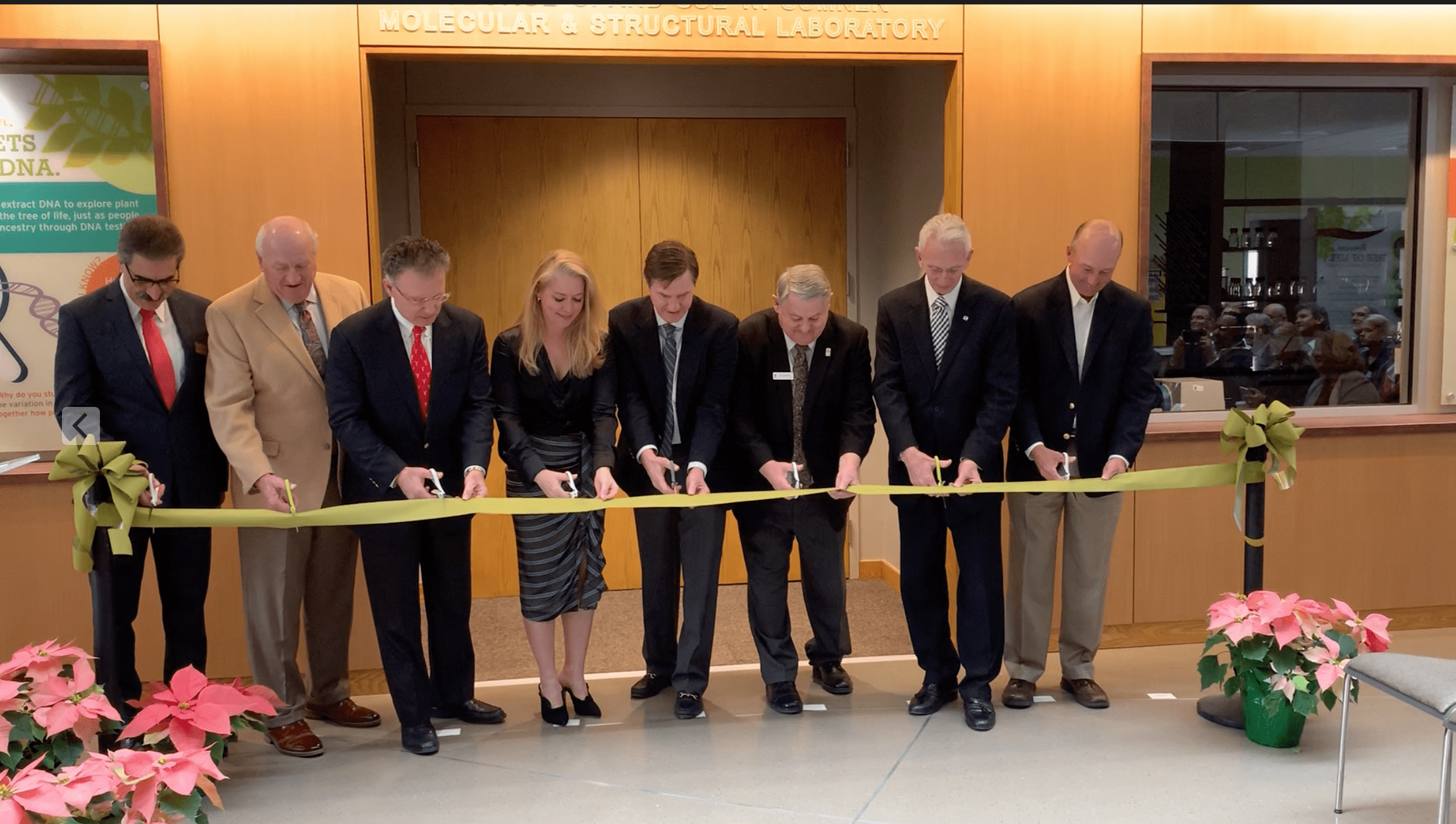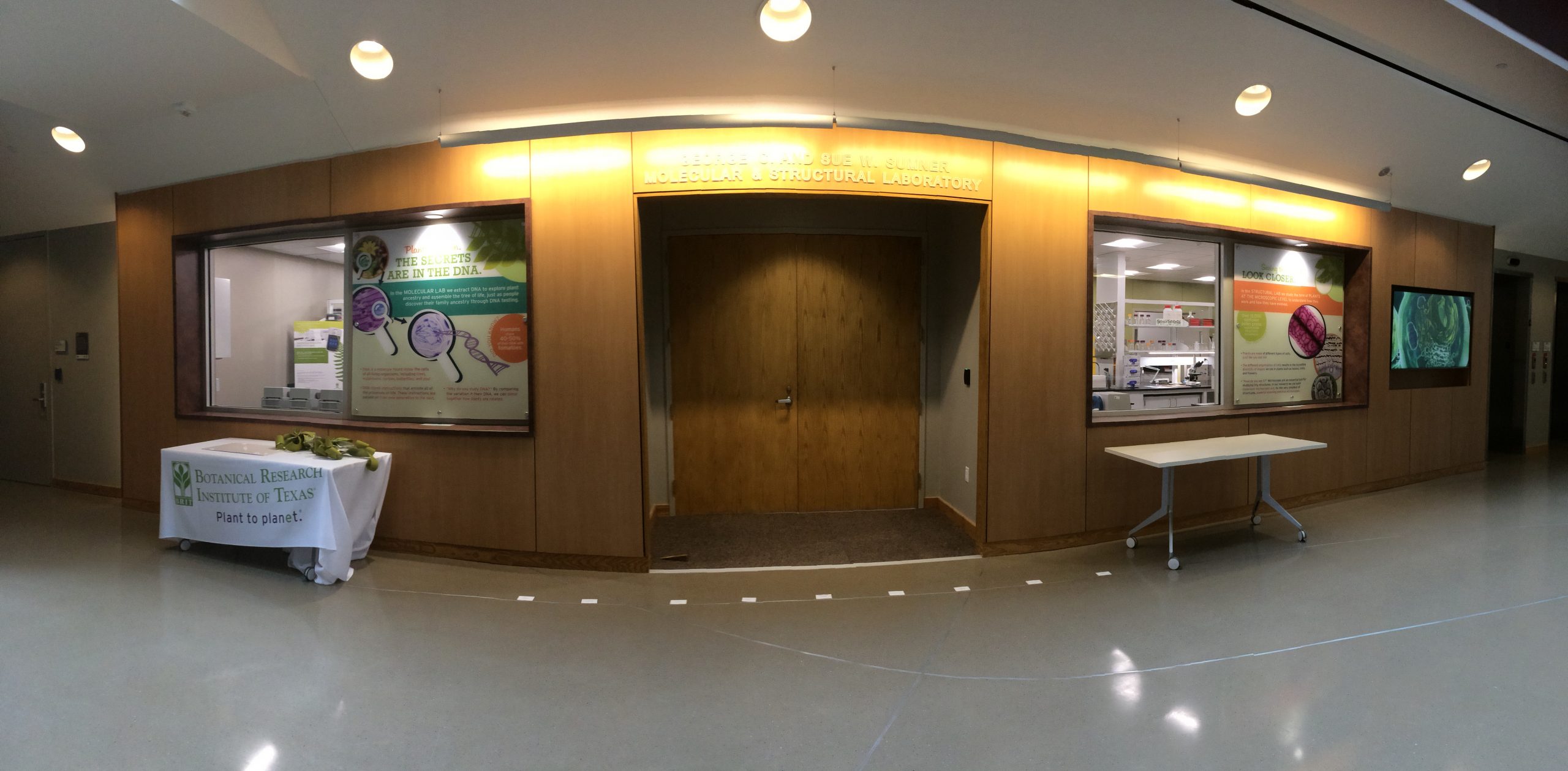Frequently Asked Questions
What is a molecular lab?
The molecular part of the laboratory generates genome-scale sequence data from DNA and RNA that allows us to document the plant and fungal tree of life and conserve our natural heritage.
What is a structural lab?
The structural part of the laboratory allows BRIT scientists to investigate the forms and functions of plants and fungi and to discover new features of plants and lichens at a microscopic level, relating structures to the functions necessary for life.
How does the molecular and structural laboratory help advance BRIT’s mission?
Together, the molecular and structural components of this laboratory help advance research at BRIT by complementing the resources that already make us one of the world’s leading botanical institutions, including our world class herbarium, library, and education programs. Botany in the 21st century integrates herbarium and library resources with laboratory techniques that allow botanists to discover, document, describe, conserve, and educate about our natural heritage.
What equipment is used in the lab and why?
Please visit the Virtual Tour section for more information.
What is the difference between DNA and RNA?
DNA is responsible for storing and transferring genetic information whereas RNA directly codes for amino acids in the production of proteins. The differences between DNA and RNA and how they ultimately (most often) relate to proteins that carry out essential cellular functions in organisms can most succinctly be described by what has been referred to as the “central dogma of molecular biology,” which describes the sequential flow of information from DNA to RNA to protein.
In a living cell, DNA is the master copy of all information about life. It is permanently stored in the nucleus. The RNA on the other hand is a molecule that copies some of the info from the DNA (a process called transcription) and takes it outside of the nucleus, where that info can be translated into proteins. Proteins are large and complex molecules that do much of the work in living cells and are required for the structure, function, and regulation of the plant’s tissues and organs.
Researchers at BRIT explore the differences between DNA, RNA, and proteins using tools in this laboratory among the diverse groups of plants and fungi we study here.
What does it mean to study plants at DNA and RNA levels?
Studying plants at the molecular level means studying the genetic basis for diversity and the features and functions of plants, thereby opening numerous avenues for understanding plant life that are otherwise hidden from our view.
What are some examples of DNA/RNA-level research related to botany?
- Assembling the plant tree of life, past and present. Assembling the tree of life requires a very close understanding of the relationships of specific plants to each other. Those relationships can be elucidated by studying and comparing the molecules and different structures of plants. Some of you may be familiar with genetic testing kits that use your DNA to help you understand your family tree. At BRIT, we use similar techniques to study the tree of life for plants and fungi, sequencing plant and fungal genomes and/or specific regions of these genomes to compare different individuals, species, or even explore higher relationships among distantly related groups of these amazing organisms.
- Exploring, understanding, and discovering the genes responsible for the different characteristics/morphologies exhibited by plants and fungi along the tree of life. Examples from our work: genes that help form the basis of leaf development, genes that play a role in photosynthesis
What is a DNA and genome bank of Texas plant species?
Biodiversity is our natural heritage, and conserving and documenting plant and fungal diversity is at the core of BRIT’s mission. As home to the Global Genome Initiative for Gardens (GGI-Gardens), BRIT has developed a biorepository – sort of a DNA bank – that stores and preserves the genomic heritage of plant species. Utilizing a network of botanical gardens in Texas, we preserve DNA from the diversity of plants throughout Texas. In a world where much biodiversity is threatened by extinction, BRIT’s DNA Bank – here in our molecular and structural laboratory – allows us to preserve the genomes of plants and document diversity before it may be lost.
This lab can also generate DNA data that documents the genetic variation of rare and endangered plants in Texas to better understand how populations are being affected by human interventions such as climate change and forest fragmentation. This information helps conservation managers make decisions on which populations of the species to prioritize for protection.
Educational Partnerships
Through partnerships with University of Texas Arlington, Texas Christian University, and Tarleton State University, BRIT will help train the next generation of plant biologists at the undergraduate, Masters, and Ph.D. levels in the use of cutting-edge molecular tools to understand and conserve life.





